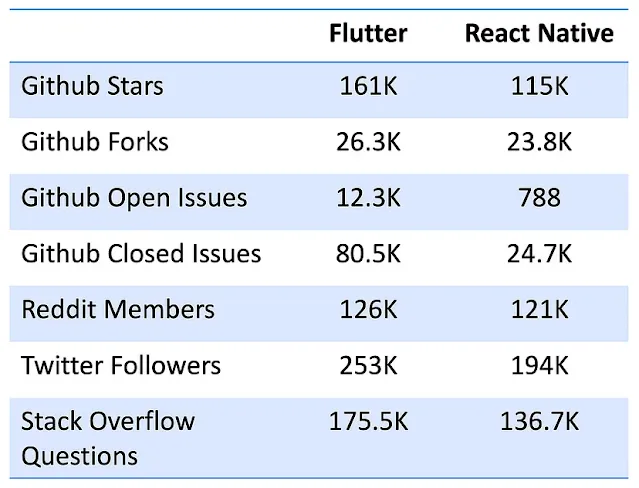Introduction
Mobile app development has revolutionized how businesses interact with customers, with Flutter and React Native standing as the most popular frameworks for creating cross-platform applications. These tools enable developers to create high-performing apps with a single codebase, reducing time and cost. As we analyze their evolution and trends in 2024, we’ll dive deeper into their performance, features, developer adoption, and considerations for hiring the right talent.
What is Flutter?
Flutter, developed by Google, is an open-source UI toolkit that provides developers with the tools to build natively compiled applications for mobile, web, and desktop platforms. Its core strengths include:
- Widget-First Approach: Everything in Flutter is a widget, enabling developers to craft intricate, pixel-perfect UIs.
- Hot Reload: Reduces development time by allowing developers to instantly preview changes in code.
- Skia Rendering Engine: A high-performance graphics engine that ensures seamless animations and transitions.
- Dart Programming Language: A client-optimized language offering simplicity, speed, and scalability.
Flutter’s appeal lies in its ability to provide consistent UI across platforms without depending on native components.
What is React Native?
React Native, developed by Facebook, is a JavaScript framework that enables developers to create mobile apps using the same principles as React.js. Its standout features include:
- Declarative Programming: Simplifies UI creation by allowing developers to define how components should look and behave.
- Native Integration: Offers access to native APIs and components, ensuring smooth interaction with platform-specific functionalities.
- Extensive Ecosystem: Supported by a vast library of third-party plugins, making it easy to extend app capabilities.
- JavaScript Foundation: Leverages JavaScript, a widely used language, to ensure rapid development and a lower learning curve.
React Native’s modular architecture and widespread adoption make it a preferred choice for companies already invested in JavaScript technologies.
Google Trends Insights
A look at Google Trends data reveals key insights into the frameworks’ popularity:
- React Native continues to dominate overall search interest, reflecting its entrenched position in enterprise development.
- Flutter has witnessed significant growth, with searches spiking in regions with active startup ecosystems. This trend signals increased adoption among new developers and businesses.
GitHub Activity
Engagement on GitHub provides a snapshot of developer interest and contributions:
- Flutter has consistently gained stars and forks, reflecting its growing appeal in the developer community.
- React Native, while maintaining a strong foothold, has shown slower growth compared to Flutter’s rapid rise.
Community and Ecosystem
Both frameworks boast active developer communities, with a wealth of resources, tutorials, and forums. Flutter’s official documentation is often lauded for its clarity, while React Native benefits from its vast ecosystem of libraries and plugins.
Speed and Efficiency
Flutter, with its compiled nature, delivers faster app startup times and better performance for graphically intensive apps. Its reliance on the Skia engine allows it to render graphics consistently across devices.
React Native, however, uses a JavaScript bridge to communicate with native components, which can lead to slower performance in complex applications.
UI Responsiveness
Both frameworks excel in creating smooth and responsive UIs, but Flutter’s widget-first approach offers more consistency. Developers often praise its ability to deliver identical UIs across iOS and Android without platform-specific tweaks.
Memory Usage
Flutter apps tend to be more memory-efficient, especially for animations and complex graphics. React Native’s memory usage can vary, particularly when third-party libraries are heavily used.
Flutter’s Strengths
- Unified UI Development: The widget-based system ensures seamless design and performance.
- Hot Reload: Enables quick iterations during development.
- Native-Like Performance: Thanks to the Skia engine, apps feel just like native ones.
- Customization: Ideal for developers aiming for highly tailored and visually unique applications.
React Native’s Strengths
- Familiarity with JavaScript: Developers already skilled in JavaScript find React Native intuitive.
- Third-Party Ecosystem: A vast range of libraries and plugins simplifies complex implementations.
- Flexibility: Works well for hybrid apps requiring frequent platform-specific customizations.
- Modular Architecture: Encourages reusable and maintainable code.
In a competitive mobile app development landscape, finding the right talent is critical. Here’s how to evaluate developers:
Skillset
- Flutter Developers: Look for expertise in Dart, experience with widget customization, and a solid grasp of Flutter’s unique architecture.
- React Native Developers: Seek proficiency in JavaScript, familiarity with React.js, and the ability to integrate third-party plugins efficiently.
Portfolio and Testimonials
- Examine completed projects to assess quality and creativity.
- Seek testimonials or references to understand their work ethic and communication skills.
Communication and Collaboration
Effective communication is essential, especially in remote teams. Prioritize developers who are proactive and articulate in expressing their ideas.
Budget and Timeline Alignment
While React Native developers may command higher rates due to the framework’s maturity, Flutter developers can be a cost-effective choice for startups without compromising on quality.
Also Watch
As of 2024, React Native and Flutter continue to lead the cross-platform app development space, each with unique strengths catering to different needs.
- Choose Flutter if you prioritize highly customizable UIs, consistent performance, and a unified development experience.
- Opt for React Native if you seek flexibility, integration with existing JavaScript-based systems, and a mature ecosystem.
Regardless of the framework, hiring skilled and experienced developers is crucial for delivering a successful app. With both tools evolving rapidly, the decision between Flutter and React Native should be based on project requirements, scalability, and long-term goals.
Whether you’re a startup building an MVP or an enterprise seeking to expand, leveraging the strengths of these frameworks can help create world-class mobile applications that captivate users.



